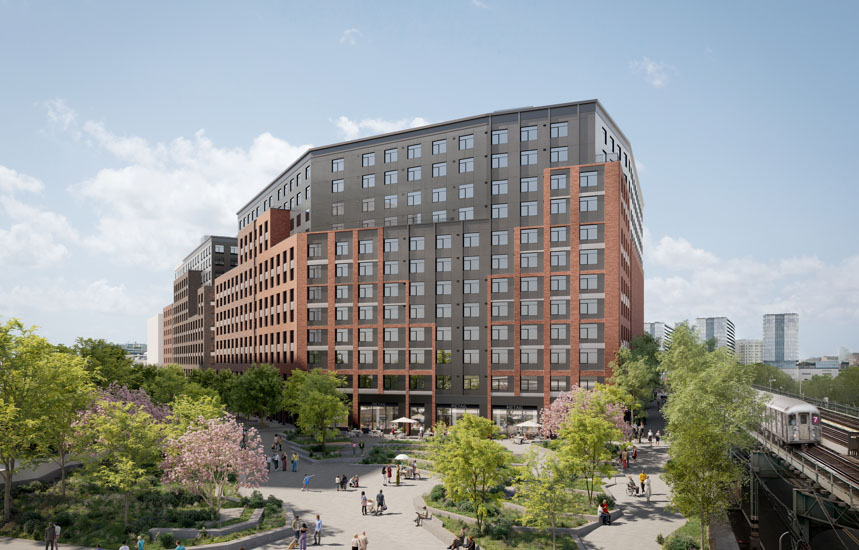Reimagining amenities for the future of workplace - by Holly Williamson

COVID-19 has fundamentally changed the way we work. Across the country, companies are acting swiftly to safeguard employees and create effective workplace strategies that many of us had never before envisioned. Across industries, these workplace strategies mainly revolve around social distancing measures, such as staggered shifts and flexible schedules, solidifying the idea that while we all wish we could return to some level of normalcy, the reality is more likely to be that our definition of what is considered ‘normal’ will change––including the amenities we desire.
For the past few years, amenities have become a vital aspect of workplace strategy helping to reinforce company culture and brand. As more and more people choose to work from home, how can employers provide them with the very same incentives and amenities? If the traditional office amenities such as gyms, happy hours, and buffet lunches, are out – what’s next, and how can companies differentiate their offerings if people aren’t in the office every day? Prior to COVID-19, the main trend in office amenities was focused on ideas that promote creativity, wellness and flexibility. As the pandemic continues to upend the world of work, new demands will push workplace strategists to adjust course and reconsider certain priorities.
As the days pass, people are becoming increasingly comfortable with working from home, and many will request workplace amenities to be designed to support their remote work. In addition, these same people may also require work from home amenities when they return to the office. Not only will these new amenities ensure happy and healthy employees, and therefore tenants, but they will also arm companies with incentives to entice employees to come back to the office. When looking at the bigger picture, there are three key elements for creating virtual amenities in the workplace: building community and culture, professional development and mentoring along with convenience. Overlays to each of these elements are WELL attributes and technology. For an amenity to be successful, it must check one of the key elements and have a technology or WELL overlay associated with it.
Before the pandemic, most companies operated under the assumption that offices were critical to productivity and community. Now, even though priorities have shifted, working remotely shouldn’t be a reason to halt these efforts. Thanks to ever-evolving technology, reinforcing a company culture and creating community is still possible, even while working remotely. To build a virtual community, employers can create a ‘digital community wall’ to celebrate teammate success both in the office and remote. Imagine a large monitor wall in the workspace that provides a view into those who are remote at certain times of day. With a tap of the screen teammates can connect across platforms to share ideas, collaborate or just say hi. Encouraging the continued use of virtual meetings for happy hours, coffee talks or social interaction should continue to be encouraged.
Whether you’re going to an office or working remotely your engagement to the company should feel familiar. Creating omni-channel experiences help reinforce the brand and the ethos of a company. Consideration should be given to the hiring process and onboarding new employees. Being able to share culture and the sense of community through videos, small group virtual meetings, 3D photography walkthroughs of the physical office space will all become differentiators to prospective employees when done remotely. Employers provided perks like subscriptions to exercise, meditation or bike sharing apps all build allegiance and reinforce culture. Allowing teammates to select the apps most appropriate to their interest and lifestyle and celebrating their uniqueness.
Creating “rules” to instill a work-life balance helps reinforce a company culture and give teammates an opportunity to breathe during the day. Technology integrated into software or wearable devices can be set to remind employees to move, stand, or drink water throughout the day. Instilling new practices such as, no scheduled calls after 5pm, enforcing lunch breaks or water cooler moments, and allowing for flexibility throughout the day can be taken advantage of regardless of location and promote WELL being and a happier and healthier workforce.
When it comes to professional development, it’s important to implement amenities that promote teamwork, forging new bonds that employees may not have made in the office. Utilizing virtual meeting tools allows you to pair the correct teammates together for growth and location becomes irrelevant. Virtual messaging tools allow further development of teams to share knowledge and integrate different skill sets to create synergies. Apps for sharing imagery or inspiration allow creative teams to build off one another during brainstorming sessions. Sharing sketches across computer screens while on a virtual meeting becomes the norm and ideas are still sparked by collaboration.
To energize teammates employers can offer ‘creative days’ to recharge batteries by working on something they are passionate about, such as gardening, woodworking, cooking, or weekend yoga retreats. These would be days provided in addition to personal or sick time and employees could be encouraged to share their interests on the “digital community wall.” Subscription services to online learning or training in a specific area of personal interest or career-related goal could be provided to ensure development and achieving success. The same is true for business and networking events–when the pandemic hit, all networking went virtual. Some events that you may not have been able to make because of your commute, travel time, scheduling conflicts suddenly became easier to attend. The hope is that some of these events will provide in person and virtual opportunities to allow for a larger audience.
Employees are busier than ever, and this leaves little time for business related or personal errands. As a result, employers are looking at ways to address this by investing in concierge services. These services can help with business related tasks, personal requests or health related needs. Remote workers can use concierges to help with printing, office supplies and ergonomic home office options. Personal services for simple tasks like dinner reservations, calling an Uber or ordering food, help facilitate simple tasks quickly and efficiently. Many concierge services now offer virtual doctor visits to help with simple diagnosis and save time waiting in the doctor’s office. Food delivery apps with designated delivery pick up spots at the office or at home have become the norm and provide an ease of use while providing healthy food alternatives.
For many city workers living in the suburbs the commute can sometimes be a drawback on those days where train delays, accidents or inclement weather foil even the best laid plans. Commuting apps, for trains, buses or ride sharing all provide data which can turn a bad morning better by just deciding to work from home. Likewise, those in the city may note that the subways are backed up and opt for using a bike share. These simple tools make the morning decisions easier and start everyone out on the right foot.
Some companies have started locating satellite offices in the suburbs to allow for collaboration among teammates who live close by and overlaying technology to create simple communication ties between the city office for team meetings. Saving time on commuting, allowing flexible schedules and embracing in-person collaboration all help to create a strong corporate culture.
These key elements for creating virtual amenities will be pivotal in ensuring the safety, productivity, and overall well-being of a company, both while working remotely, and in the office. As we can see, it’s important to understand what draws people to the office, and how to enhance these experiences. People enjoy socializing with their coworkers, going on coffee breaks, attending client meetings, and the general ergonomics of an office, but they also enjoy the flexibility and comfort of working from home. We must make sure we’re understanding how to bridge the gap between the two modes of work in order to create a more symbiotic relationship that ensures offices don’t become obsolete.
Holly Williamson, LEED AP, NCIDQ, is the design director at NELSON Worldwide, New York, N.Y.
Related Cos. and Sterling Equities open housing lottery for Willets Point Commons


The CRE content gap: Why owners and brokers need better digital narratives in 2026 - by Kimberly Zar Bloorian







.gif)

.gif)
.jpg)
.gif)